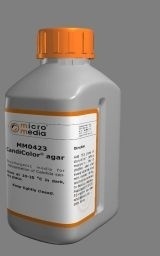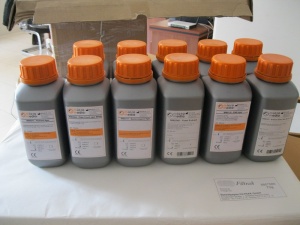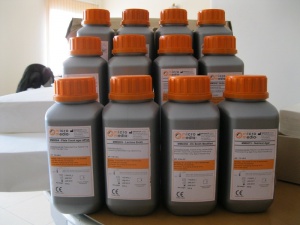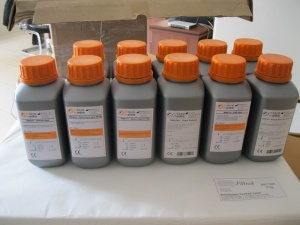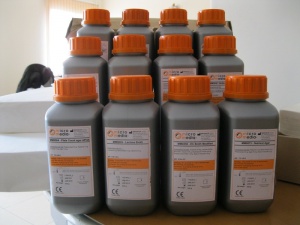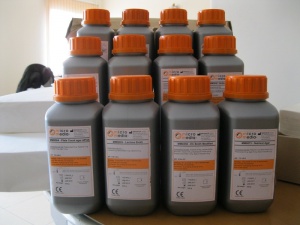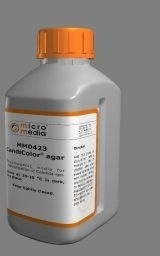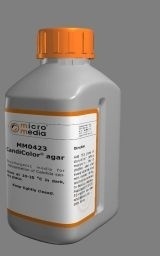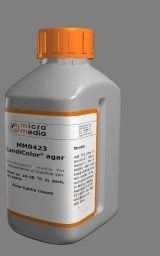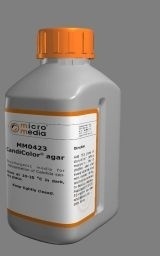ویرایش
94.6.16
اعتبار قیمت
94.10.30
لطفا پس از پایان اعتبار قیمت با شماره تلفن 88920648 تماس حاصل فرمائید
جهت دریافت کاتالوگ لطفا روی عکس کلیک کنید
| Description of MM0179 | ||||||||||||||||||||||||||||
|---|---|---|---|---|---|---|---|---|---|---|---|---|---|---|---|---|---|---|---|---|---|---|---|---|---|---|---|---|
|
XLD Agar (Xylose Lysine Desoxycholate Agar)
Use and description: Media used for the isolation and differentiation of enteric pathogens, especially Shigella and Providencia species. Xylose/lactose/sucrose non-fermenting bacteria appear as red colonies. Xylose-fermenting lysine-decarboxylating bacteria (Salmonella) appear as red colonies. Xylose-fermenting lysine non-decarboxylating Shigella and Providencia bacteria appear as opaque yellow colonies. Lactose or sucrose-fermenting bacteria appear as yellow colonies. Sodium desoxycholate inhibits Gram-positive organisms but Shigella grows. Xylose, lactose or sucrose fermentation produce medium acidification. Salmonella type members of Enterobacteriaceae do ferment xylose, but it is consumed quickly and then medium alkalinization, due to lysine decarboxylation, may hide the reaction. The difference between Shigella and Salmonella is that with the latter colonies become darker due to ferrous sulphite precipitates. The other types of enterobacteria due to lactose and sucrose fermentation produce enough acid that it avoids pH reversion by decarboxylation. At near neutral pH Salmonella can produce H2S from the reduction of thiosulphate producing black or black centered colonies. Citrobacter spp. can also decarboxylate lysine, however, the acid produced by fermentation of both lactose and sucrose will keep the pH too acid for H2S to be produced.
Composition per liter: Agar………………………………………12.50 g Lactose…………………………………….7.50 g Sucrose…………………………………….7.50 g L-lysine……………………………………5.00 g Sodium chloride…………………………...5.00 g Xylose……………………………………..3.50 g Yeast extract………………………………3.00 g Sodium desoxycholate…………………….2.50 g Ferric ammonium citrate………………….0.80 g Phenol red…………………………………0.08 g Sodium thiosulfate………………………...6.80 g
Final pH of the ready to use medium: 7.5 ± 0.2
Medium preparation: Add 54 grams of dehydrated culture medium to 1 liter of distilled water. Mix until evenly dispersed. Heat with repeated stirring and boil for one minute to dissolve completely. Dispense into Petri dishes and leave to dry.
Quality specification: Dehydrated medium: homogeneous, free flowing and light pinkish-beige fine powder. Ready to use medium: bright red-reddish orange and clear to trace hazy.
Microbiological Response:
After 24-36 hours of incubation at 37oC are described:
Storage: Dehydrated medium should be stored between 10 to 25oC. Once opened, place the container in a dark, dry place. The dehydrated medium should not be used if there is any lump or color has changed from the original. |
:
